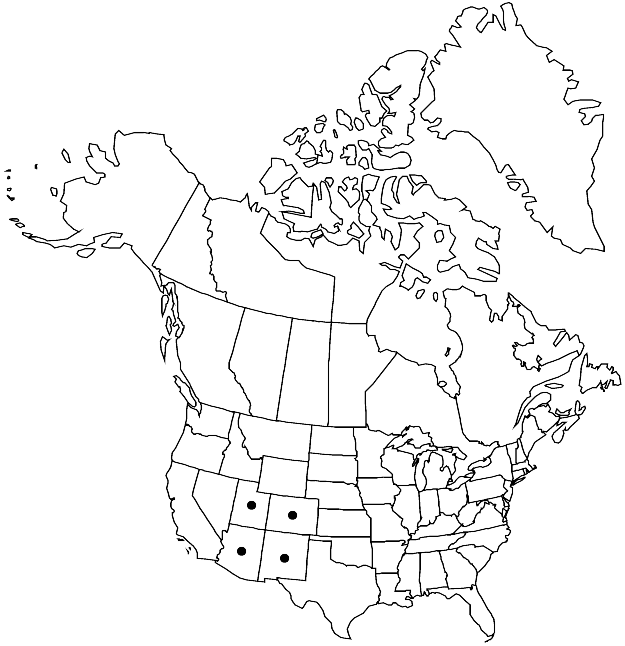Pseudoleskeella arizonae
Bull. Torrey Bot. Club 84: 351. 1957.
Plants green to yellow-green, older stems golden. Stems weakly appressed to substrate, branches curved to erect. Stem leaves not catenulate when dry, not homomallous, ovate, gradually or abruptly narrowed to apex, concave, strongly and distinctly 2-plicate, 0.6–1.5(–2) mm, 3:1; base flaring, cordate; margins recurved to mid leaf or beyond on one or both sides, distinctly serrulate distally; apex short-acuminate to acuminate, often falcate; costa single, strong, reaching mid leaf to percurrent; medial laminal cells 2(–3):1, walls firm, not incrassate. Branch leaves ovate to ovate-lanceolate, 0.4–0.8 mm; laminal cell walls thick. Stoloniferous leaves broadly ovate or suborbicular. Seta red-brown, 0.1–0.2 cm. Capsule inclined, subcylindric, asymmetric, 1–2 mm. Spores 10–16 µm.
Phenology: Capsules mature summer.
Habitat: Shaded calcareous rock, shaded tree bases, wood, soil over rock
Elevation: moderate to high elevations (1000-3500 m)
Distribution

Ariz., Colo., N.Mex., Utah, Mexico (Durango).
Discussion
Pseudoleskeella arizonae is somewhat anomalous in the genus, and has been moved among four different genera since its description. The species is very similar to a small Pseudoleskea, but differs in the lack of paraphyllia. However, there are collections of other species of Pseudoleskea that occasionally produce few if any paraphyllia. The leaves are also similar to those of Pseudoleskea. Molecular data are probably needed to determine its correct placement; it may represent a new genus.
Selected References
None.